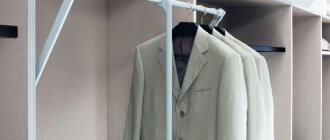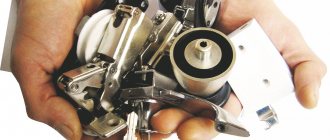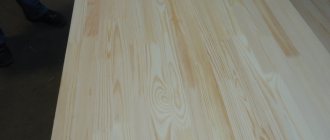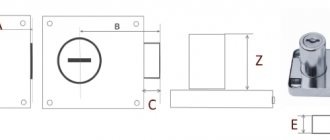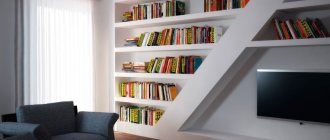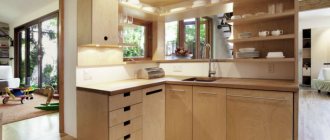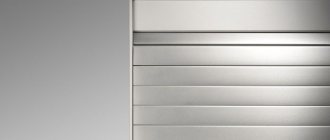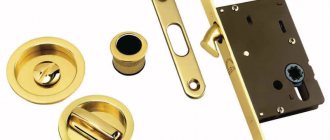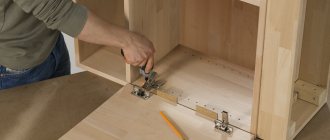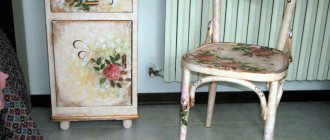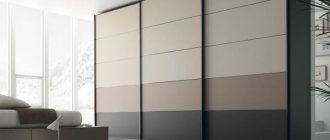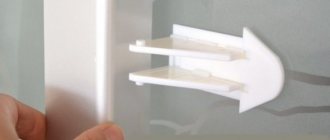Assortment for furniture assembly
Any furniture purchased in a store is accompanied by the necessary parts for assembly. The same goes for buying a cabinet. The component included in the furniture set - furniture fittings for the cabinet - must be checked to ensure that all parts are included. The kit may include:
- screws;
- bolts;
- locks;
- veneers;
- corners for connection;
- guides for drawers and doors;
- door handles;
- socket wrenches for bolts.
A wall-mounted cabinet must have corner fittings to mount the cabinet on the wall. The base cabinet has the entire set of necessary fittings. Usually it is supplied as a kit with a reserve of several parts.
Criterias of choice
In order not to make a mistake in choosing kitchen fittings and to make a profitable investment, be guided by three most important principles.
First, set your priorities clearly. You need to put forward your own requirements for different groups of accessories: when choosing facial accessories, focus on their presentability, and evaluate fasteners and components, first of all, for quality of workmanship and functionality, rather than aesthetics.
Perennial gypsophila - planting and care in open ground, photos of varieties
Secondly, pay attention to the materials. Kitchen fittings are most often made of metal, various types of plastic, glass or wood. The issue is especially important when choosing fasteners and components - savings are inappropriate here: the cheaper the products, the less they will serve you. So it’s better to give preference to reliable metal to protect yourself from the costs of regular repairs of fittings.
Thirdly, consider style features. The fittings should fit harmoniously into the interior of the kitchen, so select details that will correspond to the style direction of the space: for classics - gilding or bronze coating; for high-tech – chrome parts; for Art Nouveau - painted products; for Mediterranean styles - accessories imitated in wood or stone.
Advice. To create a holistic picture of the interior, it is desirable that all fittings be made in the same style.
Assembly using fasteners
Which set is included with the cabinet depends on the type of cabinet and its design. Bolts are used where necessary. If necessary, wood veneers are hammered. Each disassembled cabinet from the store is given an assembly diagram.
By carefully reading the instructions and following the assembly diagram, you can assemble the cabinet yourself on site, in your apartment. If the cabinet is unfamiliar, something that a person has never assembled, you need to carefully delve into the diagram. Take your time when assembling.
Otherwise, you can ruin the accessories, which are in limited quantities. In addition, you can lose time during assembly. It's better not to rush. It must be done thoroughly. This is the right path to success. You also need to have good assembly tools on hand.
Build steps
It is necessary that the fittings for sliding wardrobes be in plain sight so that it is convenient to work. Although cabinets come in different models and types, the assembly principle is not very different in the main thing. There are differences in particular regarding working with a specific model.
The basic principle of assembly is not difficult to remember. It must be performed carefully and preferably skillfully. The side walls of the cabinet, top and bottom are assembled. Everything is secured using fitting squares and bolts. When assembling, do not tighten the bolts completely at first.
So that there is a slight backlash. Once the back wall of the cabinet is made of second-rate material with nails, you can secure the bolts in the corners thoroughly. The cabinet will no longer warp anywhere. It will stand straight.
Further actions
The cabinet box is assembled. There is no need to rush to hang the doors. First you need to look at what else can be inserted inside to strengthen the cabinet. In any closets, in compartments too, there is a special stick - a spacer, strengthened inside the closet. Hangers with suits and dresses are then attached to it.
The spacer must be strengthened as soon as the cabinet frame is assembled. The spacer is also part of the fittings, like other parts necessary to strengthen it inside.
Monitor the quality of work. Since an unevenly installed spacer is a defect during assembly. Install all shelves. When all this basic assembly work is done, the cabinet stands firmly and does not wobble.
Furniture fasteners
The fasteners that ensure the fixed interaction of furniture elements include: - ties, - screws, - confirmations, - dowels, - self-tapping screws, - corners, etc. Moreover, all these listed fasteners belong to the group of screeds, but they are called differently. If we take the origins of furniture, then at the beginning of carpentry there was no such variety of fasteners as now, and all furniture was built on locking joints, tenons, “dowels” (now dowels
and wedges, which gave strength to benches and tables. Since then, a lot of things changed, but the dowel remained the fastener still used today. Dowels (8X30), however, also acquired different sizes, received corrugation and a precise chamfer at the ends. Everything else gave way to special fittings. Connecting furniture on dowels now gives us the opportunity to quickly and correctly position furniture parts during assembly, and prevents their mutual displacement during operation, absorbing all lateral loads. A dowel is a very cheap and simple part, but it also has its own difficulties. It is made from natural wood and when made from unseasoned wood or when If stored improperly, it can change its cylindrical shape, which significantly affects the quality of the connection.However, small-sized furniture is connected using dowels alone.
With large product sizes and correspondingly increasing loads, the dowels can no longer withstand pulling out, that is, longitudinal forces, and therefore, ties can always be found next to them. A screw tie or barrel tie
consists of only two elements: a screw and a “barrel” - a cylindrical part with a transverse threaded hole.
The “barrel” itself is made entirely of metal or plastic with a nut inserted inside (however, its diameter increases somewhat). The tie is very strong, since when tightening the screw, very large forces are generated and a long tightening stroke is generated, but visible screw heads always appear on the side surface of the product, spoiling its appearance. Of course, the head of the screw, especially with a hex slot, can be covered with a plastic plug, but the appearance will still leave much to be desired. The screed is not very easy to assemble. The hole in the barrel must line up exactly with the screw. Therefore, the mutually perpendicular axes of the holes for the “barrel” and for the screw in the layer and end of the part must intersect exactly. When the installed “barrel” is simply turned the wrong way, it is easy to turn it around using a specially provided slot at the end. But if the hole under it is too deep, and he simply “drowned” in it, it is extremely difficult to pull him back out. Conical coupler. The desire to hide the screw head from the front surface led to the modernization of the “barrel” coupler. As a result, the screw that passes through the attached part of the assembled furniture frame has been replaced by a rod that is screwed into a body with a threaded hole, screwed or pressed flush into the part. Two holes are drilled in the main part: one at the end, for the rod, the other, perpendicular to the first, in the plane, for the “barrel”. The rod, at the end of which a conical recess is formed on the side surface, passes through the transverse hole of the body, along the axis of which there is a threaded hole with a screw. The tip of the screw has a pointed conical shape and when the screw is screwed in, it rests on the side surface of the recess of the tie rod, displacing it together with the attached part to the end of the main one, which is what achieves tension in the connection. Screed furniture corner. The product is also very simple in design: a strip of metal bent at a right angle with a hole on one arm and a groove on the other. It consists entirely of five elements: an angle, two countersunk screws and two threaded fittings. During assembly, the angle is attached with screws to the parts being connected using metal or plastic fittings with an internal threaded hole. The tightening force is achieved by displacing the axis of the fastening hole on one of the parts being connected. As a result, when screwing the screw, it presses with the cone of its head on the conical side surface of the hole in the corner, displacing the entire attached part and attracting it. At one time, this screed even became predominantly widespread in our industry, because: it is durable; does not require drilling holes in the ends; easy to install; unpretentious to the accuracy of the location of filler holes; Disadvantages: visible; interferes with the use of furniture; there are a lot of defects in its production; As for attempts to use metal or plastic corners secured with screws to connect furniture parts, it is better not to buy furniture with such joints: this is not a screed at all, and it is impossible to obtain a reliable tense corner joint in any furniture with their help. The screw tie, or euroscrew, or euroscrew, or confirmat
screw, is usually made of carbon steel. In Europe this tie is called "Einteilferbinder" or "single element tie". And for some reason we call it a “euroscrew” or “euroscrew”. Although the name “screw tie” is much more suitable for it, especially since it is like two drops of water like a screw, only thick and blunt. Depending on the manufacturer, as well as the specifics of production, confirmations have different coatings: electro-galvanized, brass-plated, nickel, about 5 mm thick. The simplest screed, which has found such wide use among our furniture makers precisely because it does not require practically any precision at all when adding. Only two holes are drilled: one at the end of the main part, the other in the plane attached to it. The most popular are Euroscrews with a thread diameter of 7mm and a length of 50 or 70mm. Screeds from different manufacturers have their own design features. The small diameter of the head often allows, using force, to embed the screed flush with the surface of the slab without first countersinking the hole. Also, screw ties may have a specially provided “tooth” under the head, similar to a flash in a poorly made nail, which ensures that it is screwed in flush without countersinking, forming a chamfer for the hole.
A high-quality screed should not have a displacement of the head or slot relative to the axis. If this alignment does not exist, then the tie will go unevenly when screwed in, and the thread will break the hole, which impairs the strength of the connection between the chipboard parts. A tie with a smaller pitch of turns and a larger thread point provides a more durable connection. The first four turns of the thread are conical and have special serrations. Therefore, the tie works like a tap or self-tapping screw, ensuring the cutting of smooth, high-quality threads to accommodate the remaining turns without disturbing the structure of the slab. Disadvantages: head visible from the end. It is usually closed with a plug; furniture assembled on such a screed cannot be assembled more than three times, since the threads cut in such a soft material as chipboard are likely to break. The trouble is that many manufacturers, rightly hoping for the strength of the metal, have completely stopped using dowels together with this screed. But if the assembly is carried out without securing the parts in the loan, then the parts may “lead away,” which can be noticeable when inspecting some products. Eccentric coupler
– a type of connecting fittings that combines low visibility and high strength of the connection and provides the possibility of repeated assembly of the product.
Ties from different manufacturers have their own characteristics, and because of their characteristics, eccentric couplers are also called minifixes, rondofixes and raffixes - these words are derived from the names of eccentric couplers from different manufacturers. The principle of operation of the tie: A metal or plastic sleeve is screwed or pressed into the face of the attached part, flush with it, into which the tie rod with a “T”-shaped head is screwed. When assembling the product, the rod passes through a hole in the end of the main part, and its head ends up in the middle of a transverse hole drilled in its face. An eccentric is installed in it, gripping the rod head with its internal eccentric surface. With further rotation, the eccentric, turning in its hole and acting on the head of the rod, first brings the parts to be connected together, and then creates the necessary force in the connection. An eccentric coupler consists of a cast metal eccentric, a fitting and a rod. There are also quite a lot of designs of such couplers, in which the rod is wrapped directly into the material of the attached part, without the use of a sleeve. The main difference between eccentric couplers is the diameter of the eccentric. The larger it is, the greater the stroke of the tie and the greater the possible force. Eccentrics with a diameter of 25, 15 and 12 mm are used. Eccentrics with a diameter of 25 mm, and sometimes 15 mm, must be closed with a plastic plug. Disadvantages: possible weakening of the tie during use of the product. Different manufacturers solve this problem in different ways. For some couplers, the internal working surface of the eccentric is made concave, and the spherical working surface of the rod head is in contact with it. In other designs, the internal working surface of the eccentric is stepped, and the adjacent working surface of the rod head is flat. In this case, the outer surface of the eccentric is equipped with oblique smoothed teeth, inclined in the direction opposite to the direction of its rotation during assembly, which, while increasing adhesion to the material of the part, additionally prevents its spontaneous rotation and weakening of the connection during operation of the product. Also, the notches inside the eccentric increase its grip on the rod three times compared to a smooth flat surface. An eccentric coupler requires extremely precise relative positioning of all mating holes. Drilling these holes “on the knee” often leads to breakage of the eccentric when applying force during assembly. Actually, the lack of precise filler equipment limits the widespread use of eccentric couplers in domestic furniture. Screw (derived from the German Schraube) is a screw driven into wood or other soft material, in which the screw itself forms a thread by deforming the material. The screw can be screwed into any material due to the threads that are made on the screw shaft. The thread of a screw is different from the thread of screws and bolts screwed into metal. It is taller and has a larger cutting pitch. The threaded portion of the screw has a conical shape, tapering towards the end of the screw. The thread can be cut either along the entire length or only on part of the screw. The sizes of screws also vary depending on the tasks that are solved with their help. Self
-tapping screws are fasteners in shape that correspond to the definition of a SCREW, but with significant design improvements (primarily the shape of the thread, tip and slot), made of high-quality materials with various corrosion-resistant and aesthetic coatings. These improvements make it possible to frequently use screws without pre-drilling holes (which significantly simplifies and speeds up the installation process of fastened products), as well as to use screws for fastenings on a metal (aluminum, steel, etc.) base and in building materials (concrete, brick, etc.). P.). Such screws have significantly expanded the scope of their application and have significantly influenced the technology of many construction and mechanical assembly works. Since the new screws were radically different from the traditional ones, a new term appeared in everyday life - SCREWS. This concept more accurately shows the purpose and capabilities of new screws, although today it is not legalized by the corresponding standard.
Correct door hanging
Different models have different ways of constructing door reinforcements. Some require door guides. Which must be secured to the cabinet in advance before putting the doors on. These wardrobes have sliding doors.
It is better to fasten the guides in this way. Mark the locations with a marker. There will be screws there. Then use a thin drill to drill a little in these places. And attach the guides to the screws.
Do-it-yourself upholstery of upholstered furniture: step-by-step master class, advantages and disadvantages of updating furniture (130 photos)Wardrobe for the bedroom: the best models of 2021 and modern solutions from leading manufacturers (120 photos and videos)
Shelves for the bedroom - modern ideas for use and current combinations with interior design (125 photos and videos)
To be sure, you must first secure the front, middle, and end of the guides. Then the rest. Typically, two sliding doors have two guides, to the right and left of the cabinet.
Other nuances of the hitch
If the doors are hinged, the fittings used are different. Special furniture hinges. They also come in unusual shapes. The one attached to this cabinet is the one that is attached. According to the drawing, according to the scheme, this is planned, and not something else. It’s better not to invent anything unnecessary here, to follow the scheme.
The loops are secured. Then the doors themselves are hung. The scheme may differ for different designs. But everyone has the same principle. Doors must move freely in both directions and be reliably protected from falling out of their intended sliding limits.
On doors that are not installed on the cabinet, you also need to secure the handles for the cabinet in advance. With this element it is easier to hang doors on the closet. After all, when installing a lock, the door has to be opened and closed. Check. It is inconvenient to attach a lock to the door without a handle.
Manufacturing materials
The durability and comfort in use of furniture depend not only on the design features of the fittings. It is important what material the product is made of. It can be:
- cast brass;
- cast zinc;
- aluminum alloys;
- stainless steel;
- plastic.
Review of basic types of furniture fittings, selection criteria
Cast brass
Cast zinc
Aluminum alloys
Stainless steel
Plastic
Treatment of materials from exposure to chemicals, moisture, to increase mechanical wear resistance is carried out in the following ways:
- Chrome plating. A semi-gloss nickel layer is electrolytically applied to the base material, then chrome-plated. For a matte effect, a special alloy is used before processing.
- Grinding. The mechanically processed material is varnished. This prevents the oxidation of the metal. With intensive use, the varnish wears out.
- Polishing. The material is polished manually or using machines. Brass is covered with patina.
- Anodizing. This is a high-quality anti-corrosion oxide coating. Created as a result of an electrochemical reaction.
- Oxidation. A layer of copper is electrolytically applied to the metal and covered with a film. Protect the top with varnish.
- Galvanizing. This coating involves chrome plating. This improves corrosion resistance.
- Powder coated polyester. Forms a hard film at an elevated temperature of 200 degrees. Such fittings cannot withstand intensive use.
The purpose of furniture screed, its main types
Plastic fittings have become popular lately. High strength characteristics are combined with wear resistance. Plastic has antistatic properties and is ideal as a construction material for fittings.
Chrome plating
Grinding
Polishing
Anodizing
Oxidation
Galvanizing
Powder coating
